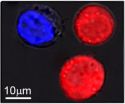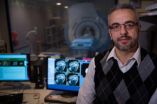(Press-News.org) BALTIMORE, Md. (December 3, 2012) – In the first study to compare mental health-related emergency department (ED) visits between children with and without autism spectrum disorders (ASD), researchers found that ED visits are nine times more likely to be for psychiatric reasons if a child has an ASD diagnosis. Published in the journal Pediatric Emergency Care (Epub ahead of print), the study found externalizing symptoms, such as severe behaviors tied to aggression, were the leading cause of ED visits among children with ASD. Importantly, the likelihood of a psychiatric ED visit was higher if a child carried private health insurance rather than medical assistance.
"This finding of higher rates of emergency room visits among children with autism demonstrates that many children with autism aren't receiving sufficient outpatient mental health care to prevent and manage the type of crises that are driving these families to seek urgent help," said Dr. Roma Vasa, senior study author and a child psychiatrist in Kennedy Krieger Institute's Center for Autism & Related Disorders. "These findings should highlight the urgent need for better comprehensive outpatient mental health care and insurance coverage for children with autism, along with greater education and training for emergency medical staff."
Using the 2008 National Emergency Department Sample, the largest all-payer ED database in the US, researchers examined data from a total of 3,974,332 ED visits for patients ages 3 to 17, of which 13,191 visits were from children with ASD. Mental health-related ED visits were based on International Classification of Disease (ICD) billing diagnoses that included mood, anxiety and psychotic disorders, suicide and self-injury, and externalizing behaviors such as aggression.
Researchers also studied the influence of different types of insurance coverage on the likelihood of an ED visit for psychiatric reasons. They found that children with ASD whose families had private medical insurance were 58 percent more likely to visit the ED for mental health-related reasons than those whose health insurance was provided through state medical assistance programs.
"We think this is because private insurance plans often exclude autism from behavioral health coverage, have few in-network providers or place restrictive limits on the amount of mental health expenses that they will reimburse," said Luther Kalb, MHS, first study author and a research scientist in Kennedy Krieger Institute's Center for Autism & Related Disorders.
With 1 in 88 children in the U.S. diagnosed with ASD, the use of the ED to treat psychiatric behaviors is likely to increase unless changes occur. Dr. Vasa suggests that this trend is especially troublesome because the ED is not an optimal setting for children with ASD since chaotic environments can exacerbate autism-related or comorbid psychiatric symptoms.
"Children with autism, especially those with co-occurring psychotic disorders or severe behaviors, need to have an emergency crisis plan in place," said Kalb. "Everyone involved in the life of a child with autism, from parents to medical professionals to school educators, needs to have routine discussions about what to do in the case of an escalating situation."
This study also suggests that emergency departments should consider adopting new measures to accommodate children with ASD. This includes greater education and training for ED professionals about how to properly assess and interact with children on the autism spectrum. Additionally, researchers suggest that the large numbers of children with autism accessing the ED may necessitate a separate area for children with ASD that is less chaotic and contains less stimulation than found in the otherwise busiest part of any hospital.
Further research on adults with ASD using the ED for psychiatric reasons and general trends associated with mental health care is needed. With more information, medical professionals and insurance providers can have a greater understanding of the gaps in care and work to improve services.
### Financial support for this study was provided by ROAR for Autism, an annual fundraising event held by the Center for Autism & Related Disorders at Kennedy Krieger Institute.
About the Kennedy Krieger Institute
Internationally recognized for improving the lives of children and adolescents with disorders and injuries of the brain and spinal cord, the Kennedy Krieger Institute in Baltimore, MD serves more than 18,000 individuals each year through inpatient and outpatient clinics, home and community services and school-based programs. Kennedy Krieger provides a wide range of services for children with developmental concerns mild to severe, and is home to a team of investigators who are contributing to the understanding of how disorders develop while pioneering new interventions and earlier diagnosis. For more information on the Kennedy Krieger Institute, visit www.kennedykrieger.org.
Children with autism arrive at emergency room for psychiatric crisis 9 times more than peers
Kennedy Krieger researchers find families with private insurance more likely to use emergency department for urgent mental health care
2012-12-04
ELSE PRESS RELEASES FROM THIS DATE:
Curiosity shakes, bakes, and tastes Mars with SAM
2012-12-04
NASA's Curiosity rover analyzed its first solid sample of Mars in Nov. with a variety of instruments, including the Sample Analysis at Mars (SAM) instrument suite. Developed at NASA's Goddard Space Flight Center in Greenbelt, Md., SAM is a portable chemistry lab tucked inside the Curiosity rover. SAM examines the chemistry of samples it ingests, checking particularly for chemistry relevant to whether an environment can support or could have supported life.
The sample of Martian soil came from the patch of windblown material called "Rocknest," which had provided a sample ...
Alzheimer's researcher reveals a protein's dual destructiveness – and therapeutic potential
2012-12-04
A scientist at the University of British Columbia and Vancouver Coastal Health has identified the molecule that controls a scissor-like protein responsible for the production of plaques – the telltale sign of Alzheimer's disease (AD).
The molecule, known as GSK3-beta, activates a gene that creates a protein, called BACE1. When BACE1 cuts another protein, called APP, the resulting fragment – known as amyloid beta – forms tiny fibers that clump together into plaques in the brain, eventually killing neural cells.
Using an animal model, Dr. Weihong Song, Canada Research ...
Search for life suggests solar systems more habitable than ours
2012-12-04
SAN FRANCISCO—Scattered around the Milky Way are stars that resemble our own sun—but a new study is finding that any planets orbiting those stars may very well be hotter and more dynamic than Earth.
That's because the interiors of any terrestrial planets in these systems are likely warmer than Earth—up to 25 percent warmer, which would make them more geologically active and more likely to retain enough liquid water to support life, at least in its microbial form.
The preliminary finding comes from geologists and astronomers at Ohio State University who have teamed up ...
DNA analysis of microbes in a fracking site yields surprises
2012-12-04
SAN FRANCISCO—Researchers have made a genetic analysis of the microbes living deep inside a deposit of Marcellus Shale at a hydraulic fracturing, or "fracking," site, and uncovered some surprises.
They expected to find many tough microbes suited to extreme environments, such as those that derive from archaea, a domain of single-celled species sometimes found in high-salt environments, volcanoes, or hot springs. Instead, they found very few genetic biomarkers for archaea, and many more for species that derive from bacteria.
They also found that the populations of microbes ...
Multitasking plasmonic nanobubbles kill some cells, modify others
2012-12-04
HOUSTON – (Dec. 3, 2012) – Researchers at Rice University have found a way to kill some diseased cells and treat others in the same sample at the same time. The process activated by a pulse of laser light leaves neighboring healthy cells untouched.
The unique use for tunable plasmonic nanobubbles developed in the Rice lab of Dmitri Lapotko shows promise to replace several difficult processes now used to treat cancer patients, among others, with a fast, simple, multifunctional procedure.
The research is the focus of a paper published online this week by the American ...
Listen up, doc: Empathy raises patients' pain tolerance
2012-12-04
A doctor-patient relationship built on trust and empathy doesn't just put patients at ease – it actually changes the brain's response to stress and increases pain tolerance, according to new findings from a Michigan State University research team.
Medical researchers have shown in recent studies that doctors who listen carefully have happier patients with better health outcomes, but the underlying mechanism was unknown, said Issidoros Sarinopoulos, professor of radiology at MSU.
"This is the first study that has looked at the patient-centered relationship from a neurobiological ...
Women with sleep apnea have higher degree of brain damage than men, UCLA study shows
2012-12-04
Women suffering from sleep apnea have, on the whole, a higher degree of brain damage than men with the disorder, according to a first-of-its-kind study conducted by researchers at the UCLA School of Nursing. The findings are reported in the December issue of the peer-reviewed journal SLEEP.
Obstructive sleep apnea is a serious disorder that occurs when a person's breathing is repeatedly interrupted during sleep, sometimes hundreds of times. Each time, the oxygen level in the blood drops, eventually resulting in damage to many cells in the body. If left untreated, it ...
Mercury releases contaminate ocean fish: Dartmouth-led effort publishes major findings
2012-12-04
In new research published in a special issue of the journal Environmental Health Perspectives and in "Sources to Seafood: Mercury Pollution in the Marine Environment"— a companion report by the Dartmouth-led Coastal and Marine Mercury Ecosystem Research Collaborative (C-MERC), scientists report that mercury released into the air and then deposited into oceans contaminates seafood commonly eaten by people in the U.S. and globally.
Over the past century, mercury pollution in the surface ocean has more than doubled, as a result of past and present human activities such ...
Baby's health is tied to mother's value for family
2012-12-04
The value that an expectant mother places on family—regardless of the reality of her own family situation—predicts the birthweight of her baby and whether the child will develop asthma symptoms three years later, according to new research from USC.
The findings suggest that one's culture is a resource that can provide tangible physical health benefits.
"We know that social support has profound health implications; yet, in this case, this is more a story of beliefs than of actual family support," said Cleopatra Abdou, assistant professor at the USC Davis School of Gerontology.
Abdou ...
University of Minnesota researchers find new target for Alzheimer's drug development
2012-12-04
MINNEAPOLIS/ST. PAUL (December 3, 2012) – Researchers at the University of Minnesota's Center for Drug Design have developed a synthetic compound that, in a mouse model, successfully prevents the neurodegeneration associated with Alzheimer's disease.
In the pre-clinical study, researchers Robert Vince, Ph.D.; Swati More, Ph.D.; and Ashish Vartak, Ph.D., of the University's Center for Drug Design, found evidence that a lab-made compound known as psi-GSH enables the brain to use its own protective enzyme system, called glyoxalase, against the Alzheimer's disease process. ...
LAST 30 PRESS RELEASES:
Making lighter work of calculating fluid and heat flow
Normalizing blood sugar can halve heart attack risk
Lowering blood sugar cuts heart attack risk in people with prediabetes
Study links genetic variants to risk of blinding eye disease in premature infants
Non-opioid ‘pain sponge’ therapy halts cartilage degeneration and relieves chronic pain
AI can pick up cultural values by mimicking how kids learn
China’s ecological redlines offer fast track to 30 x 30 global conservation goal
Invisible indoor threats: emerging household contaminants and their growing risks to human health
Adding antibody treatment to chemo boosts outcomes for children with rare cancer
Germline pathogenic variants among women without a history of breast cancer
Tanning beds triple melanoma risk, potentially causing broad DNA damage
Unique bond identified as key to viral infection speed
Indoor tanning makes youthful skin much older on a genetic level
Mouse model sheds new light on the causes and potential solutions to human GI problems linked to muscular dystrophy
The Journal of Nuclear Medicine ahead-of-print tip sheet: December 12, 2025
Smarter tools for peering into the microscopic world
Applications open for funding to conduct research in the Kinsey Institute archives
Global measure underestimates the severity of food insecurity
Child survivors of critical illness are missing out on timely follow up care
Risk-based vs annual breast cancer screening / the WISDOM randomized clinical trial
University of Toronto launches Electric Vehicle Innovation Ontario to accelerate advanced EV technologies and build Canada’s innovation advantage
Early relapse predicts poor outcomes in aggressive blood cancer
American College of Lifestyle Medicine applauds two CMS models aligned with lifestyle medicine practice and reimbursement
Clinical trial finds cannabis use not a barrier to quitting nicotine vaping
Supplemental nutrition assistance program policies and food insecurity
Switching immune cells to “night mode” could limit damage after a heart attack, study suggests
URI-based Global RIghts Project report spotlights continued troubling trends in worldwide inhumane treatment
Neutrophils are less aggressive at night, explaining why nighttime heart attacks cause less damage than daytime events
Menopausal hormone therapy may not pose breast cancer risk for women with BRCA mutations
Mobile health tool may improve quality of life for adolescent and young adult breast cancer survivors
[Press-News.org] Children with autism arrive at emergency room for psychiatric crisis 9 times more than peersKennedy Krieger researchers find families with private insurance more likely to use emergency department for urgent mental health care



